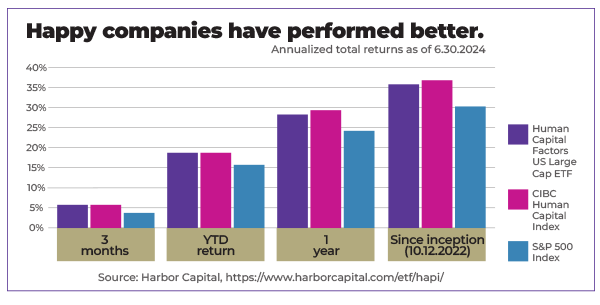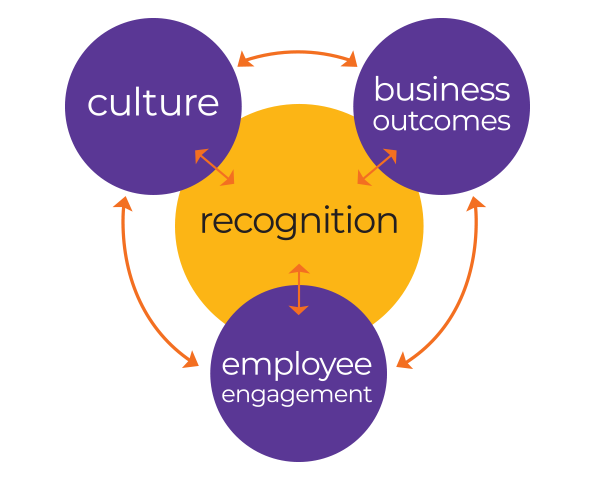We want to know your big goals. Are you trying to launch a new product while phasing out an old one? Do you need to increase your market share or double your revenue over the next five years? Maybe you want to boost your Net Promoter Score by at least 20 points.
Big goals are labelled as such for a reason – they’re challenging to achieve. They require the full attention, focus, and commitment of every single employee. In large companies with tens of thousands of employees worldwide, all engaged in different tasks, this can seem daunting. At BIW, we have a proven framework to help you achieve these big goals.
First, let’s acknowledge that employee recognition impacts culture. Employees who believe their good work will be recognized are 12.4 times more likely to say they have a great company culture.
Employee recognition also boosts employee engagement. Employees who receive recognition and awards are more likely to feel committed, work harder, and feel inspired. A good culture and engaged employees lead to positive business results.
For example, Irrational Capital partnered with Harbor Capital to create a Large Cap ETF based on companies’ culture and engagement scores. This fund has, on average, outperformed the S&P 500 since its inception.

Our data at BIW supports this pattern, showing that companies with better culture, engagement, and employee experience also report more financial growth.
However, these are correlations. We can flip the chart and see that companies with higher financial projections also have better cultures and engagement. So, does culture drive results, or do results drive culture? Our research and client work suggest it’s both. Good culture drives good results, and good results make for a better culture. But even great cultures can have problems. One of our clients with high culture scores experienced a failed project launch, leading to lower scores for the teams involved.

The reality is that culture and business results influence each other. If you’re only focusing on improving culture, you won’t unlock your program’s full potential. Think of building a great basketball team: to win, you need both talented players and team cohesion. A team that focuses on individual skills OR teamwork will perform better than one that focuses on neither. But a team that focuses on both will have far greater success. The same goes for employee recognition. By fueling this cycle from all sides, we achieve stronger and faster results than by influencing culture alone.
At BI WORLDWIDE Canada, we help our clients by recognizing achievements and supporting culture while driving business results. We use our business improvement process and principles of behavioural economics to understand your strategic goals, key stakeholders, and challenges. We then design a program that communicates, educates, motivates, and updates employees as they work towards these big goals.

Using this model, we have driven big goals like improving free cash flow, increasing quarterly and annual sales, and reducing turnover.
The next time you think about goals for your employee recognition program, think big. What are your executive team’s priorities? What do you need your employees to do to reach these goals? Then put the model to work: educate, communicate, motivate, and update your teams to achieve something great while reinforcing your culture. You’ll create a great workplace and drive significant impact.
